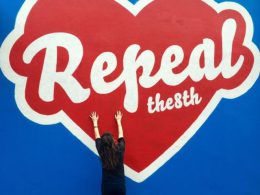Zero Dark Thirty, directed by Kathryn Bigelow and written by Mark Boal, sets out to depict – but according to Bigelow not necessarily endorse – the “greatest manhunt in history”, the hunt for Osama bin Laden. Despite Bigelow’s claims of artistic neutrality, her film is a grotesque and blatant propaganda piece for US foreign policy post 9/11 and its criminal use of torture in particular.
The film follows the story of a young CIA agent, Maya (Jessica Chastain), whose unwavering determination over a decade – which is fuelled by her belief in a certain destiny – is key to the successful extra-judicial killing of bin Laden and several other women and men who happen to be in the same house in Pakistan.
Having been nominated for five Academy Awards, the film is surprisingly dull. Shot well and with insights into the operations of the CIA that could only have come from close collaboration with the US government itself, the film does provide an accurate portrayal of the brutality of torture. However the plot is not exactly unpredictable; it’s drawn out over two and a half hours and none of the characters have any depth, including Maya, who is a cold, merciless loner who was recruited to the CIA straight from high school – she’s essentially a robot.
Revealingly, the working title for the film was “For God and Country”, which more clearly expresses the kind of chauvinistic message that the film contains. A debate has emerged between critics and defenders of the film, as to whether it endorses and justifies the use of torture.
The film begins with images from the horrific attack on the World Trade Centre in New York on 11 September 2001 and is interspersed with images of other reprehensible suicide bombings carried out by Al Qaeda-linked groups, such as the 7/7 bombings in London. But the timing of such scenes speaks volumes, as the torture is depicted as a direct response to these atrocities. The information that led to the whereabouts of Bin Laden, a triumph for Maya, the CIA and the US government, came as a result of torture and in this sense the film didactically advocates for the use of vile human rights abuses such as water-boarding, by US imperialism.
But what is most telling about the film is what’s left out. The invasion and continuing occupation of Afghanistan and Iraq, which included the slaughter of hundreds of thousands of innocent people by US imperialism, hardly gets a mention. Nor is the impact of US foreign policy in the Middle East before 9/11 ever referenced. 2001 is clearly year zero as far as the filmmakers are concerned.
Also left out is the fact that while cynically reaping praise from the establishment in the US for killing bin Laden and apparently striking a blow against terrorists around the world, the Obama regime through the CIA has been funding those very same Al Qaeda groups in Libya and Syria, as it now suits their interests – as it did in the 1980s.












